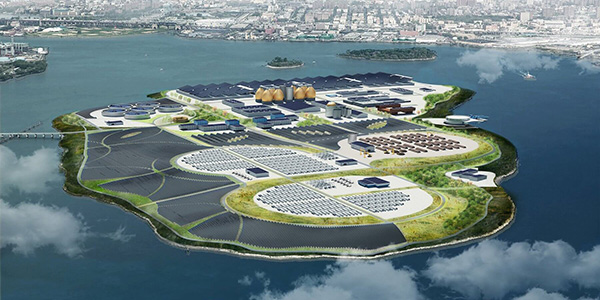
The collective voice of New Yorkers has filled City Hall Park for centuries. It was where they protested the Stamp Act in 1765 and raised the first Liberty Pole a year later. On July 9, 1776, the Declaration of Independence was read there, in the presence of General George Washington.
In the late morning of the last day of August 2023, concerned citizens gathered once again in the leafy lower triangle between Broadway and Park Row. This time, they came carrying a clock.
Not a real clock but a makeshift sign, designed to look like a digital clock display. Instead of hours, minutes, and seconds, this clock showed years, months, and days – 04:00:00.
The ersatz countdown clock alerted the dozens of gathered activists and the intended audience of officials working in the hallowed halls across the stone walkway that a deadline loomed exactly four years away. The Rally to Close Rikers was held at this place and this moment on purpose – to mark four years to the day before Rikers Island, the largest prison in New York City, is mandated by city law to be closed.
The path toward the long-overdue closure of this brutal facility began in February 2021, when Mayor Bill de Blasio signed into law a trio of bills passed by the City Council: the Renewable Rikers Act. Local Law 16 requires continuing biannual transfers of all land and facilities on Rikers Island not being used to house or support the prison population from the Department of Corrections to the Department of Citywide Administrative Services. Local Law 17 requires a feasibility study be conducted determining the potential for a renewable energy hub and large-scale battery storage to be housed on Rikers Island. And Local Law 31 requires a study to assess the island’s capacity for organic waste processing and wastewater treatment facilities.
As Climate Week NYC 2023 gets underway, we are 03:11:13 on that countdown clock from Rikers being shuttered. And, to date, the City is 0-for-3 on making progress toward the fulfillment of those three laws and the realization of a renewed and Renewable Rikers. The clean energy feasibility study due back in April around Earth Day has not yet been released. The wastewater feasibility study is due next April, but there had been talk that it might be completed as early as this fall; we remain cautiously optimistic. And the last three transfer deadlines – July 1, 2022; Jan. 1, 2023; July 1, 2023 – have passed without so much as an acknowledgement by Mayor Eric Adams and his administration.
There will be so many amazing ideas discussed during Climate Week, so many innovative potential solutions to the mounting challenges of climate change, from rising temperatures to rising sea levels. As you read, watch, and hear about those plans and proposals, we encourage you to keep an eye and an ear open for any mention of Renewable Rikers, the potential gamechanger already on the books in New York City.
“Obviously, our water quality team talks about all the time is how much nitrogen is in the water in the Western Narrows of Long Island Sound,” said Sam Marquand, our clean water advocacy specialist. “To take Rikers Island and build a wastewater treatment facility large enough, centralized enough, and modern enough to cut the nitrogen going into the water would have an incredible impact on water quality in New York City. Just removing the overwhelmed systems that are around 70 years old from the equation would be huge.”
As part of the Renewable Rikers coalition, we will continue to monitor the progress (and call out the lack thereof) toward Aug. 31, 2027. We’ll share with our Save the Sound community updates on everything from the release of those feasibility studies to the developments regarding the potential installation of a federal receiver to oversee the administration of Rikers Island, which would mean removing New York City from the day-to-day and long-term operation of the prison.
For now, it’s enough to know that even if you don’t hear much about it this Climate Week, there is a clock ticking.
